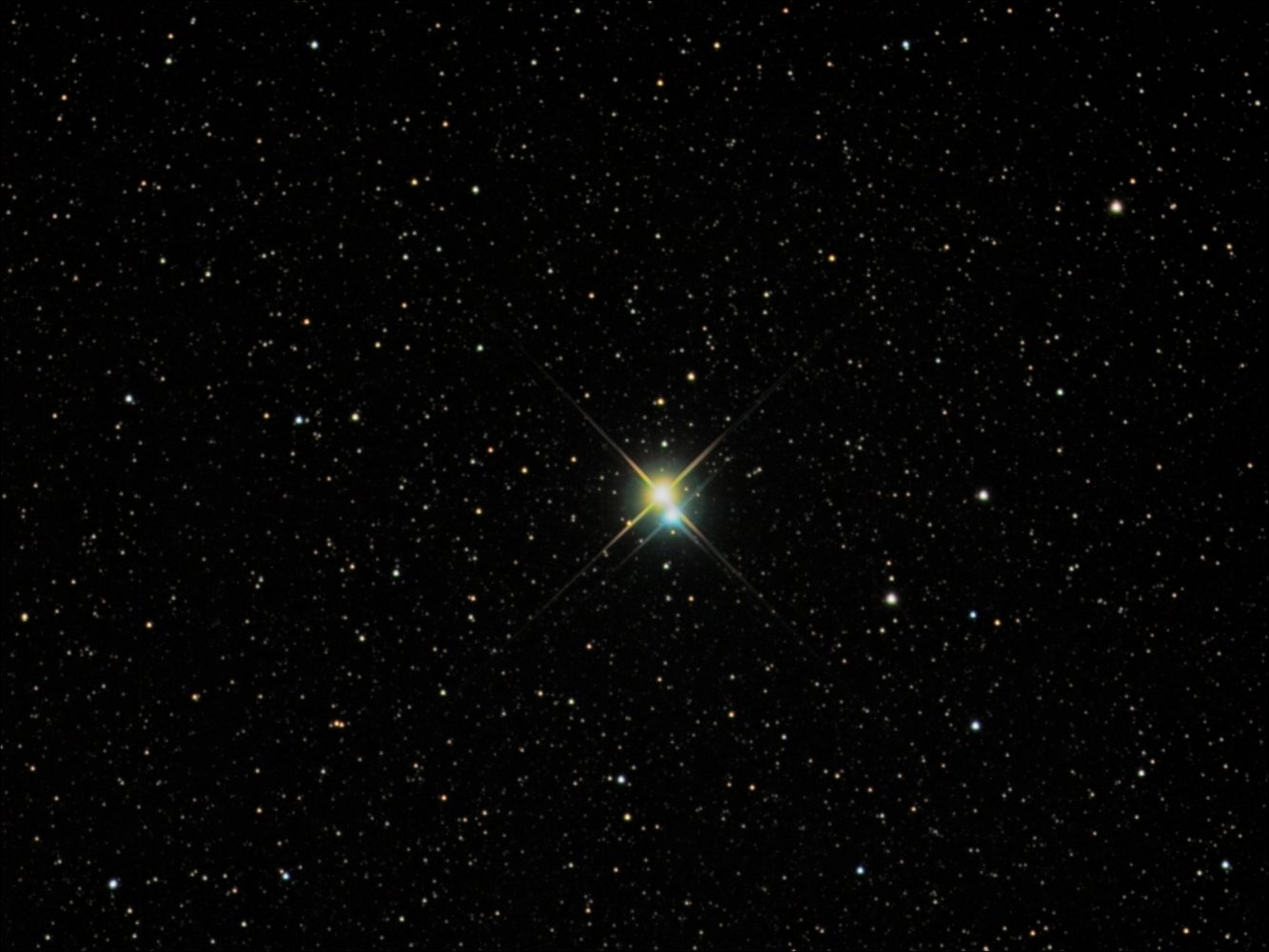Looking up in the night sky, space looks like a black-and-white world. Sure, there are famous exceptions like red Betelgeuse, but most stars look just white, or even gray. But there is in fact color in space; the colored things are just too faint to be seen as any different from gray. If only one had the help of a telescope — say, a large one on top of the science building — one could see a lot more color in the night sky. For this, there’s nothing better to look at than the double star Albireo, where two stars shine in different colors because of their very different temperatures.
How are colors and temperatures connected? Well, blue is cold and red is hot, right? It’s the other way around for an astronomer. Consider this: campfires are red and hot (red-hot, in fact), but they won’t melt the metal stick your marshmallow is on. If you want to melt metal, you use a blowtorch, whose flame is so hot it’s blue. Star colors follow the same trend: the coolest ones are red, but they get yellow, white, and eventually blue as they get hotter. Astronomers, then, consider blue to be hot-as-can-be, rather than ice-cold, and likewise see red as chilly.
When looking at stars and other very faint things, the human eye sacrifices color sensitivity to increase its overall sensitivity. So despite the wide spectrum of colors available to stars, almost every one you look at (with those rare, bright exceptions like Betelgeuse) appears a faint white. Albireo, though, is bright enough when viewed through the telescope to overcome this limitation. It looks like a normal, white star when you look up in the sky, but the telescope reveals it to be two separate stars appearing right next to each other. The smaller of the two is almost three times hotter than the larger, giving the two stars an immediately obvious color difference. The larger, cooler star has been variously described as red, orange, yellow, gold, maize, and even topaz, while the smaller is more commonly agreed to be blue.
In a nice bit of self-symmetry, very large telescopes have found that what appears to be the non-blue star is actually a binary system — two stars closely orbiting each other. Another blue star, similar to the blue star of Albireo proper, slowly orbits the red-yellow-topaz star, whose brighter orange-gold light hides it.
To the naked eye, the stars of Albireo combine to make a normal, faint, colorless star, the head of the constellation Cygnus the Swan. Through Calvin’s telescope, though, two differently-colored stars are revealed, easily visible right next to each other, making a magnificent contrast.
Calvin’s observatory (accessible via the Science Building staircase nearest to North Hall) is open to the Calvin community clear nights Monday through Thursday, with the general public also invited on Wednesday, from 7:30 or half an hour past sunset (whichever is later) until 11 pm. Student observers will be on duty to operate the telescope and show you the sights. For the latest information, visit calvin.edu/observatory.
Sunset times for Sept. 28–Oct. 4, 7:28–7:17 p.m.









